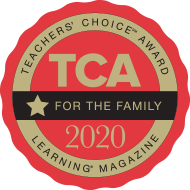Materials
- a slide at a playground
- collection of objects (a stick, a leaf, a pebble, a ball, etc.)
- clipboard
- chart paper labeled “Slide, Roll, Stay in Place”
Key Science Concepts
- A ramp is a surface with one end higher than the other.
- An object placed on a ramp will roll, slide, or stay put.
Vocabulary
Encourage children to use the words ramp, slanted, flat, roll, and slide, as well as science process words such as observe, compare, same, different, change, and predict.
Directions
- Before going outside, talk to children about slides.
- What sort of slides have you been on? What does it feel like to slide down a slide?
- Have you slid down other things besides a slide?
- What do you think makes you slide faster or slower?
- Have you ever put anything on a slide to see if it would slide down? Tell us about it.
Write down children’s ideas. If you have an older, more sophisticated group, you might show them a small collection of objects (a stick, a leaf, a pebble, a ball, etc.) and ask them to predict what will happen when each object is placed on the slide. Write down their predictions.
- Go outside and give everyone a turn sliding down the slide. Bring along a clipboard and jot down the things the children say and do. Some children may notice that different clothing affects their speed on the slide, or if they hold their shoes up or down.
- Then invite children to join you in sending the objects, one by one, down the slide. Jot down the things the children say and do.
Reflect and Share
- When you go back inside, invite children to talk about their experiences at the slide. Use your notes to share examples of what various children said and did, and encourage other children to share their own similar (or different) experiences and observations.
- Ask children which objects rolled and which objects slid down the slide. Add these objects to the appropriate column on a chart called “Slide, Roll, Stay in Place.” (Include sketches of the movements and objects next to the words.) If children made predictions about how each object would move on the slide, compare them with what actually happened.

 Español
Español








